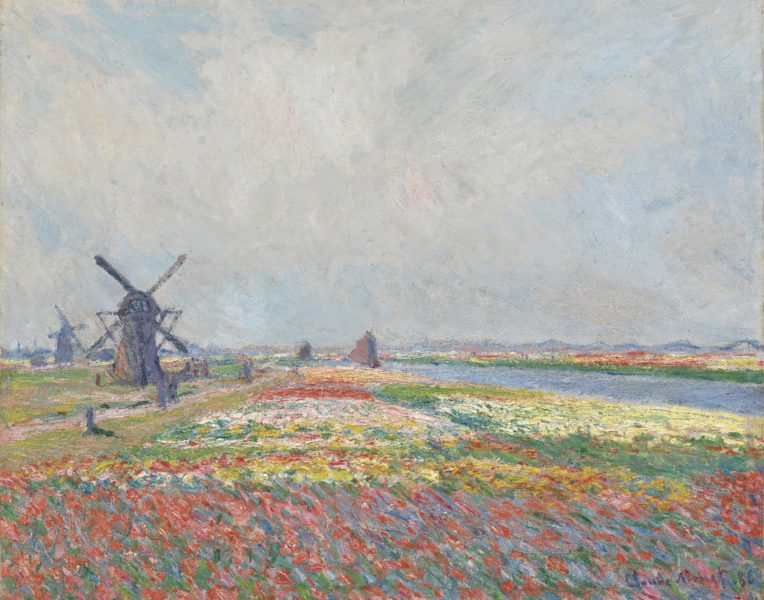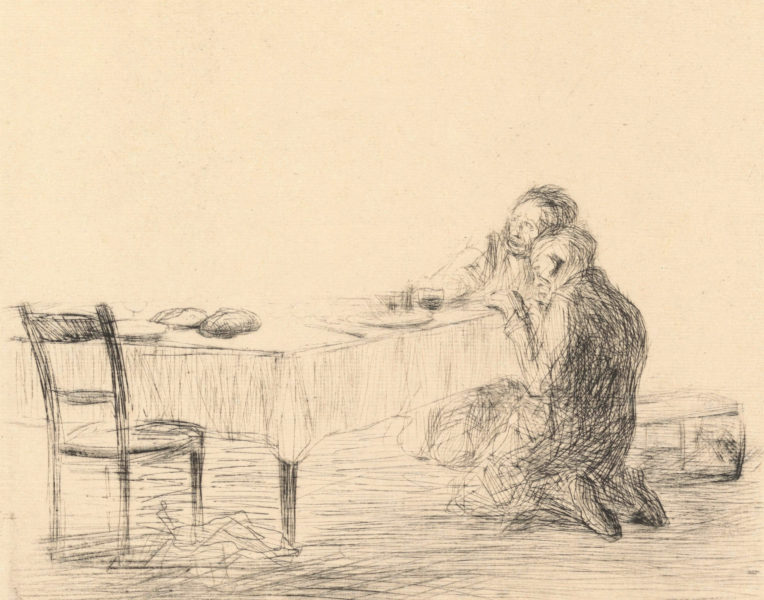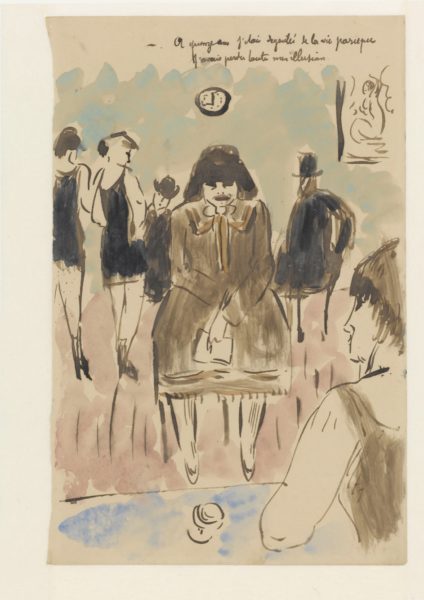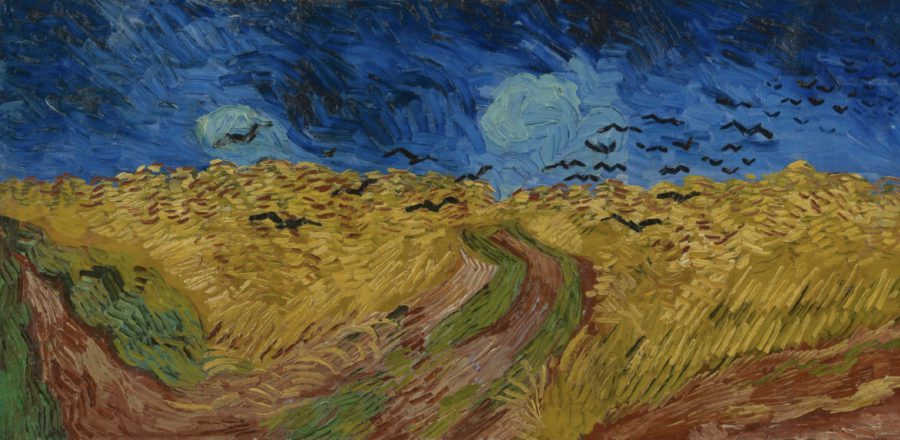June 25th, 2024
Written by Anna Keagy, Gallery Intern
When the first Inside Out movie was released, it was the summer after second grade, and my parents drove us to the theater to see it. It’s now the summer after my junior year of high school, and my friends and I will be driving ourselves to the theater to see Inside Out 2. We’ll have slushies and popcorn just like the first time. Even though it’s almost been ten years, we haven’t forgotten those charming emotion characters.
Emotion is present in almost every art piece, whether it’s intentional or not. Art also evokes emotion in those who look at it. In honor of the release of Inside Out 2, let’s take a look at the emotion in several works of art.
1. Joy

“Tulip Fields Near The Hague,” by Claude Monet, Van Gogh Museum, Amsterdam (Vincent van Gogh Foundation)
Tulip Fields Near The Hague was painted on one of Monet’s trips to the Netherlands. He loved the vast fields of colorful flowers the Netherlands had to offer. The bright colors and pale blue sky of this painting exude an upbeat and pleasant mood. After all, who wouldn’t feel delighted when standing in a field of stunning flowers on a bright spring day?
2. Fear

“After the Apparition (Après l’apparition),” by Jean Louis Forain, Van Gogh Museum, Amsterdam (Vincent van Gogh Foundation)
In After the Apparition, two men tremble at the end of a table, staring in fear at an empty seat. A chair behind them has been knocked over, indicating their shock and fear. They have just seen some sort of ghost. The horror of the encounter is visible in their twisted facial expressions and their huddled bodies as they cower on the floor. Even without the ghostly specter in the image, the fear is clearly conveyed.
3. Disgust

“At Fifteen I Could Only Feel Disgust for Life, because I Had Lost All My Illusions,” by Emile Bernard, Van Gogh Museum, Amsterdam (Vincent van Gogh Foundation)
The emotion of this work is not immediately apparent when looking at it. At first, it seems like a pleasant image of a young girl. It is the title, At Fifteen I Could Only Feel Disgust for Life, because I Had Lost All My Illusions, that conveys the true meaning. This girl may look pleasant, but she is experiencing emotional turmoil under the surface. Many can relate to the disillusionment that young teens feel as they enter the adult world and realize it’s not all sunshine and rainbows. This work is from the series Au Bordel, which are all watercolor pieces. They all depict common experiences and emotions, particularly of women and girls.
4. Sadness

“Wheatfield With Crows,” by Vincent Van Gogh, Van Gogh Museum, Amsterdam (Vincent van Gogh Foundation)
Van Gogh painted many works like this near the end of his life. They depict the bright fields of the countryside under stormy and turbulent skies. His intention was to express a deep sadness and loneliness. Van Gogh struggled with depression and other mental health issues very intensely throughout his life, and these final paintings reflected that. The deep blues of the sky and the ominous prescience of the crows turn what would be an idyllic countryside scene into something heavy and dark.
5. Anger

(“A Stag at Sharkey’s,” by George Bellows, Andrew W. Mellon Fund)
A Stag at Sharkey’s is one of many lithographs of fighting men that George Bellows created. The emotions run high in this image, with the jeering faces of the crowd surrounding the violence of the central focus. They are caught in motion, pummeling each other brutally. Even though the fight is a professional one, the work has a feel of anger and intensity to it.
Emotion can be present in artwork in many ways. It can be plainly visible on a person’s painted face or depicted in their body language. In a work without humans, it can be shown through color and stylistic choices. Van Gogh and Monet both painted landscapes of the countryside, and yet their works had completely opposite emotions. No matter what the subject is, the artist can control the way a painting feels.
 Studio Stories: America Martin
Studio Stories: America Martin Gallery MAR Holiday Gift Guide 2025
Gallery MAR Holiday Gift Guide 2025 The Art of People - Capturing Sonder
The Art of People - Capturing Sonder